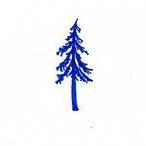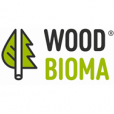
The first decision to be made, when considering pruning, is whether cutting off and removing living branches will actually benefit the tree or shrub. Will the proposed pruning prolong its useful life expectancy within the context of the surrounding environment and land use. Andrew Cowan explains how it is important to remember that pruning may do more harm than good, and in some situations may create more problems than it solves.
Every cut made has the potential to change the growth of the tree or shrub. Removing living foliage, by pruning, affects the trees physiology and future growth. The reduction in leaf area that results from pruning, will reduce the tree’s overall photosynthetic capacity and may reduce overall growth on the pruned section, or on the entire tree.
However, the casual observer of the growth that appears after pruning could be mistaken for thinking that cutting off branches and reducing the trees leaf area, is beneficial and encourages new vigour. This may indeed appear to be the case, but remember that there are often less branches left for the tree to produce new shoots from and severely pruned trees have a tendency to initiate the production and growth of ‘water-sprouts’, as a response to the need for new foliage and increased photosynthetic capacity.
It is important that anyone considering pruning work to a tree, has an understanding of the biology of trees and how they respond to pruning in order to optimize their health and structure. Plants are reactive, generating systems, which use basic mineral and organic resources to build new tissues. They do not have the capacity to heal or repair damaged areas, so where week points occur due to injury, all they can do is re-enforce the site by growing, reactively, additional tissues and replace the losses.
Trees store energy reserves (starch, sugars, and oils) in branches, stems, trunk and roots. These energy reserves can be preserved by removing, the fewest number of living branches necessary to accomplish the desired objective. Excessive branch removal depletes these reserves and reduces the ability of the tree to photosynthesize and store more energy. It is also important to be aware that if the tree is forced to use vital energy reserves for growth, they will not be available for defense against plant pathogens or wood decay organisms.
There should be a good reason to remove more than a quarter, of a trees leaf area, in a single year. It is important to consider pruning over the entire life-span of the tree or trees involved and not as a one-off single operation. Many trees generate adventitious sprouts, in response to over-pruning, as they attempt to replace the stored energy. However live-branch pruning is an essential part of forming good crown structure, and is a necessary procedure in the management of specimen trees within residential parks and gardens.
It is essential when considering pruning a tree, of any age, that a thorough evaluation is done to determine the objectives to be achieved, when the work is complete. The decisions can them, be made as to where, how, when and how often to prune the specific tree or trees, to achieve these objectives. This evaluation process is, an essential part of planning the management of any tree or tree population, and should be recorded in a tree management schedule.
Each time a tree is pruned, according to the timing regime set out within the management plan, a work specification will need to be drawn up to provide the practical arborist with guidance. The arborist will them be able to make informed decisions, and make appropriate pruning cuts based on an understanding of branch attachment and tree biology, to achieve the pruning objectives.
Removing the correct stems, branches or branchlets is as important as making the right pruning cuts. Even with proper pruning cuts, if the wrong branches or too many branches are removed from a trees crown it can defeat the object of the pruning regime.
No tree should be pruned without first establishing clearly defined pruning objectives, which may include the following:
- Improve crown structure and form l Reduce risk of failure
- Maintain health
- Prolong useful life expectancy
- Removal of dead, dying or diseased wood l Influence flowering or fruit production
- Provide clearance
- Reduce shade or wind resistance
- Improve aesthetics or allow a view
- Maintenance and enhancement of wildlife habitat
This list is not exclusive and will vary depending on the tree itself and the surrounding land use that will influence management objectives, but the methods used to achieve them can be selected from the following pruning types;
- Formative and structural pruning l Crown thinning
- Crown raising
- Crown reduction
- Crown clearing and dead wooding l Restoration pruning
- Conservation pruning
- Pollarding
Throughout the entire process, from the initial planning stage to the completion of pruning work and removal of arising debris, the following two points should be considered;
- All pruning created wounds on trees, and can remove significant areas of living tissues. The open wound may allow the entrance of disease organisms and the ingress of oxygen, which could instigate the decay of the exposed woody tissues. Combine this then with the loss of leaf area when a branch is removed leaving that section of the tree with less photosynthetic, energy producing tissue, and one must consider any pruning to be potentially detrimental to the future health and sustainability of the tree.
- The tree supports a diverse ecosystem of organisms which live around its crown, on its roots and in the soil around it. These organisms may use the living or dead tissues of the tree for food, while others will form symbiotic relationships with the tree itself. So it is important to consider that any removal of dead wood from the crown or the clearance of pruning debris or leaves from the area around the tree could potentially be detrimental to the continued viability of the ecosystem in which the tree lives.
Pruning types that could form part of a work specification to achieve a particular objective.
Several types of pruning may be used to achieve a particular management objective and work on one occasion could be just part of a pruning regime over several years, and ultimately the entire life-span of the tree. Not all objectives can be successfully achieved after just one prune and others may need to be repeated in order that a desired outcome is maintained. The following pruning types can be used in isolation or in combination, depending on the management requirements and pruning objectives.
Formative and structural pruning
Structural pruning is most often completed at the establishment stage of tree development, when it is known as formative pruning. The main objective of this type of pruning is to encourage the formation of good stem and branch structure, by improving the orientation, spacing, growth rate, strength of attachment and ultimately size of branches. Well planned, formative pruning during the establishment of a young tree can prolong its useful life expectancy within the context of a particular land use.
This type of pruning can reduce the need for large branch removal, and the creation of oversized wounds, when the tree is older. Structural pruning can be completed on semi-mature trees, but should be avoided on mature specimens. The main management objectives of this type of pruning are to help engineer a crown form which need less pruning when mature, and where ever possible limit the development of weak structural features which may fail in latter life.
Crown thinning
Crown thinning, is the selective removal of small, live branches throughout the entire crown, with the aim of reducing the density of the tree leaf area. There is no external alteration to the trees size or shape because just internal branches are removed. The important aspect to remember here is that the majority of branches should be removed from the outside third of the tree crown. The maintenance of an inner crown leaf area is essential to sustain good branch, stem taper.
The excessive removal of branches from the lower two thirds of a branch or stem can lead to ‘lions tailing’ which may have adverse effects on their long term structural integrity, resulting in early failure. It is also important to limit the amount of foliage removed, each time a tree is thinned, to no more that 25% (a quarter) of the leaf area, and ideally between 10-20% where possible within the management objectives.
The size of branches to be removed, during thinning operations, should also be limited, and wherever possible within the specification a recommended maximum diameter should be given. In most cases this can be limited to a size between 3cm to 4cm.
Crown raising
Crown raising, is the selective reduction and removal of branches to create some vertical lift of the tree canopy, allowing space under the tree for light, people, vehicles or buildings. When specifying this pruning type it is essential to consider the importance of maintaining as many low branches as possible to sustain good trunk growth and the formation of even trunk taper.
It is important to remember that excessive removal of low branches can lead to the development of poor trunk crown balance, where a tree may become top heavy. It is also essential to be aware that all wounds around the main trunk of a tree could potentially allow the development of decay which may reduce the long term integrity of the trees main supporting structure. Where every possible the number and size of would should be limited and well spaced, so there is less chance of decay pockets combining to form larger cavities.
Some of the problematic issues described above can be addressed by the reduction of branches rather than their complete removal. In such cases the size and age range of branches to be remove should be specified, while it may also be possible to reduce the end weight of some drooping branches to bring about some lift, in the overall canopy.
Crown reduction
Crown reduction or shaping, involves the removal and reduction of branches and stems to decrease the height or spread of a trees crown area. This type of pruning can be completed for a number of reasons to achieve a range of management objectives, from purely aesthetic when used to shape an entire canopy, to the reduction of one limb where excessive end weight may threaten failure.
Crown reduction work can be specified to cover every branch within a trees crown or it can be limited to just one. However, one principle should be applied at all times; the desired effect should be accomplished with reduction or removal cuts and not heading cuts. Because biologically the tree has more effective mechanisms for wound decay responses where branches are removed from their point of origin close to the branch collar. The use of heading cuts also spoils good tree architecture and can significantly increase maintenance requirements.
An important point to consider in branch reduction is the amount of foliage, or photosynthetic material, which is left to sustain the remaining branch or stem tissues. When a branch of a mature tree is reduced no more than a quarter (25%) of its foliage should be removed, while more can be removed in younger trees to achieve particular management objectives. If insufficient foliage is left, large areas of the main branch wood may become dysfunctional and open to decay fungi, which could lead to branch die-back.
A common rule of thumb is that the remaining lateral branch should be at least one-third to one-half the diameter of the removed portion. At such a size, the lateral branch should be able to produce enough energy to keep the parent branch alive, and there should be enough growth regulators present to suppress excessive sprouts. This rule varies with tree species, age and condition, while localised variations in climate will also have an impact. Old, stressed or mature trees could decline or become more stressed if too much foliage is removed.
Crown clearing and dead wooding
This type of pruning is used where a tree is being maintained as a specimen within the context of an ornamental garden. Here the removal of dead,
dying, diseased, detached or broken branches is specified to improve crown appearance and the overall tree aesthetics. The removal of such branches may also be considered desirable where they represent a risk to persons or property.
However, it is also important to remember that dead wood is an essential habitat for a large number of organisms in the ecosystem in which the tree lives. The formation of dead wood within the crown of a tree is part of the natural system of tree life and should not be considered to be a negative thing that has to be removed to maintain healthy tree growth.
Dead wooding is the removal from the tree of dead, dying or diseased branch wood, broken branches or stubs left from previous tree pruning operations or as a result of storm damage. The work specification should identify one of three categories of dead wooding to be performed:
1 Complete dead wooding
The removal of dead, dying or diseased wood, broken branches and stubs left from previous tree pruning operations, provided such material exceeds 10mm in diameter or 100mm in length (smaller material shall be allowed to remain in the tree unless the Employer states to the contrary in the tender documents)
2 Major dead wooding
The removal of wood either over 50mm in diameter or over 200mm long, be that wood dead, dying or diseased branch wood, broken branches or stubs left from previous tree pruning operations
3 Stabilisation dead wooding
Dead wood to be broken off by hand or by being struck with stick or be partly sawn through and broken off. A throw line may also be used to break off the ends of branches, in order to retain as much aerial dead wood as possible to maintain the habitat value.
Restoration pruning
Restoration pruning, may be considered necessary where a tree has been damaged, poorly pruned or where a once regular management regime has lapsed, resulting in the formation of poor structural features. The principles behind this type of pruning are similar to those used in structural or formative pruning on establishing trees, but more care is required due to the maturity of the specimens involved. This type of pruning has to be planned over a much longer time frame and only a limited percentage (perhaps only 10%) of a trees leaf area should be removed at any one time.
Restoration pruning may involve the training of young epicormic, or water-sprout, shoots to form new branches and allow the reestablishment of new area of crown. It is therefore important to provide a more detailed pruning specification, which may involved the identification of a specific area of the trees crown or even a particular branch.
Natural fracture pruning techniques that mimic the natural branch loss that would occur following storm events, small diameter branches may be partially cut through from above and then ripped off, by hand, from within the crown or by rope from ground level, seeking to leave a split or fractured branch end, and exposed heartwood, that may or may not be associated with an existing growing point.
Conservation pruning
Not all, pruning work is completed to improve tree health or structural form, some management objectives allocate more weight to the creation and management of wildlife habitat. In such cases it may be considered advantageous to create large wounds with the aim of increasing the area of dead and decaying wood in a tree, or to top a limb to encourage a crown of dense re-growth which could provide good nesting opportunities for birds.
The retention of dead wood around the crown of a tree may be considered an important aspect of trees managed for their wildlife value. However, there are often conflicts that arise when health and safety issues have to be addressed. In these situations a specification that allows for the sympathetic reduction of dead branches or stems, using cutting techniques like ‘coronet cuts’ to maintain a more natural appearance to the cut ends, may be considered desirable.
Destructive pruning techniques may be used to create habitat in trees as part of a conservation project and involve techniques that will result in the creation of decay within the trunks and main branch structure of trees. Veteranisation pruning techniques, could also be used, that are intended to prematurely ‘age’ a tree in a controlled and targeted manner to initiate the creation of habitat or stimulate the formation of a secondary crown
Pollarding
Pollarding is beheading a maiden tree by removing the main leader or stem and then subsequently cutting on a regular basis (Re-pollarding) back to the same point (Pollard Head). Pollarding is a management system used to control the growth of a tree throughout its life, and is initiated at a young age. When older mature trees are treated in this way as a crude form of size control this can be described as topping, and can seriously damage or even kill the tree.
Where pollarding is specified it should be part of a long term management plan for a tree or tree population. If a pollarded tree has lapsed out of regular management, re-pollarding should not be specified. In such cases restoration pruning could be considered to either train the branches to form a normal crown area, or using staged reduction work re-establish a pollard management regime.
-
 2
2
Report Article




.thumb.jpg.4a8e2360f3200bf7b0c542de10609966.jpg)










Recommended Comments
There are no comments to display.
Create an account or sign in to comment
You need to be a member in order to leave a comment
Create an account
Sign up for a new account in our community. It's easy!
Register a new accountSign in
Already have an account? Sign in here.
Sign In Now